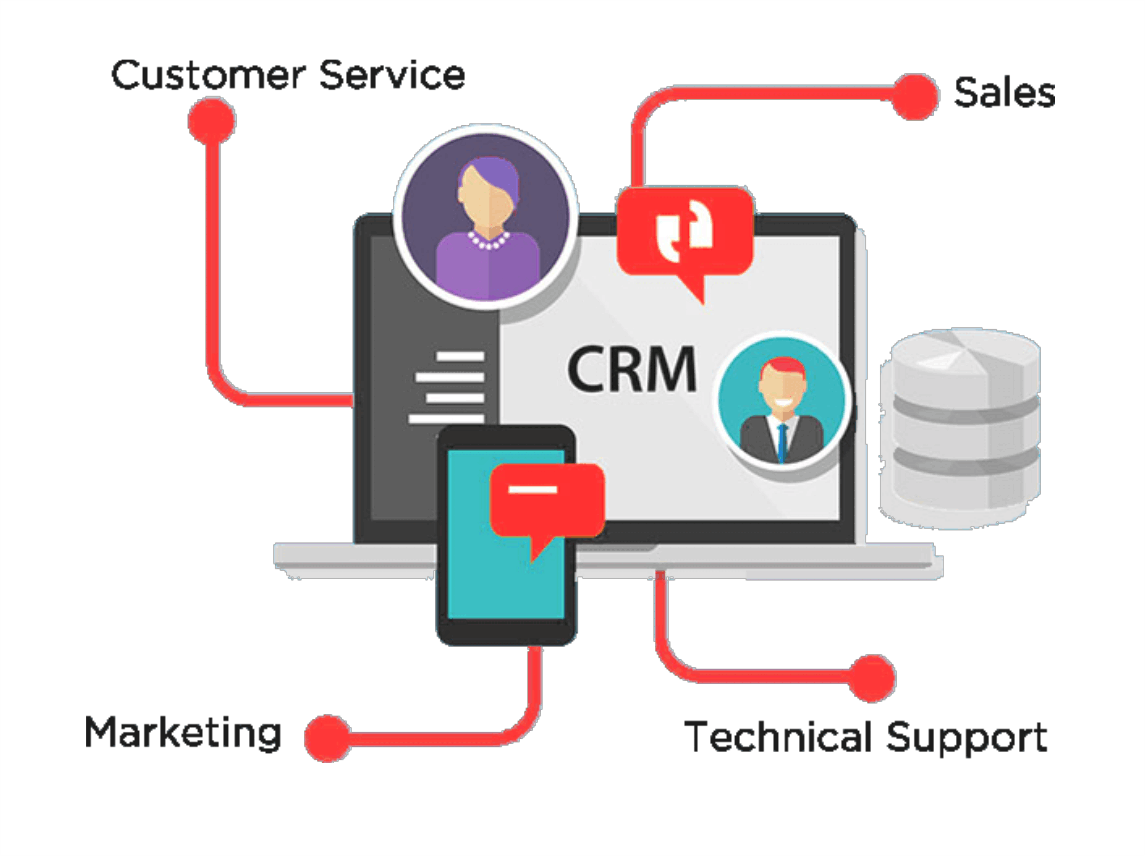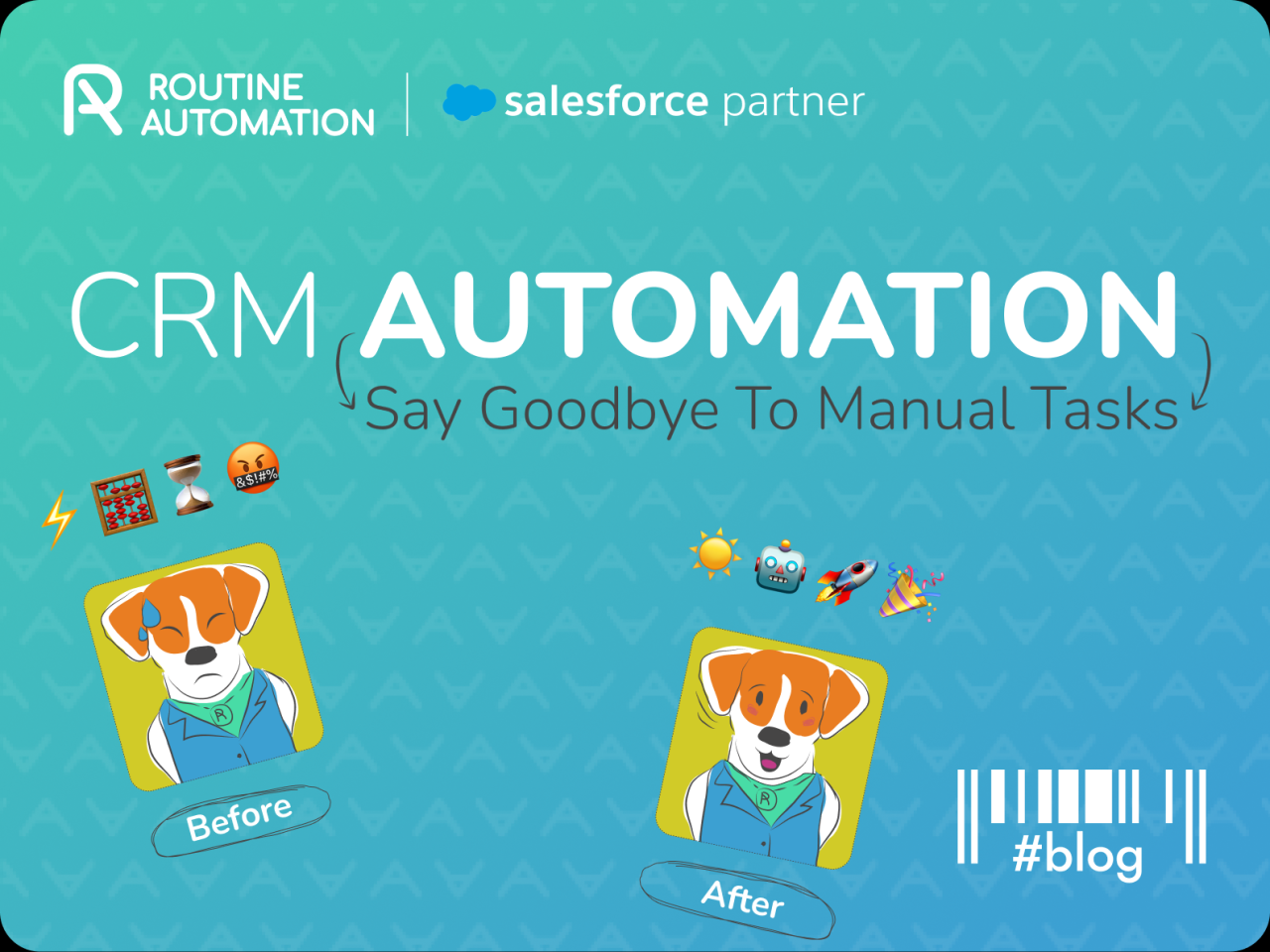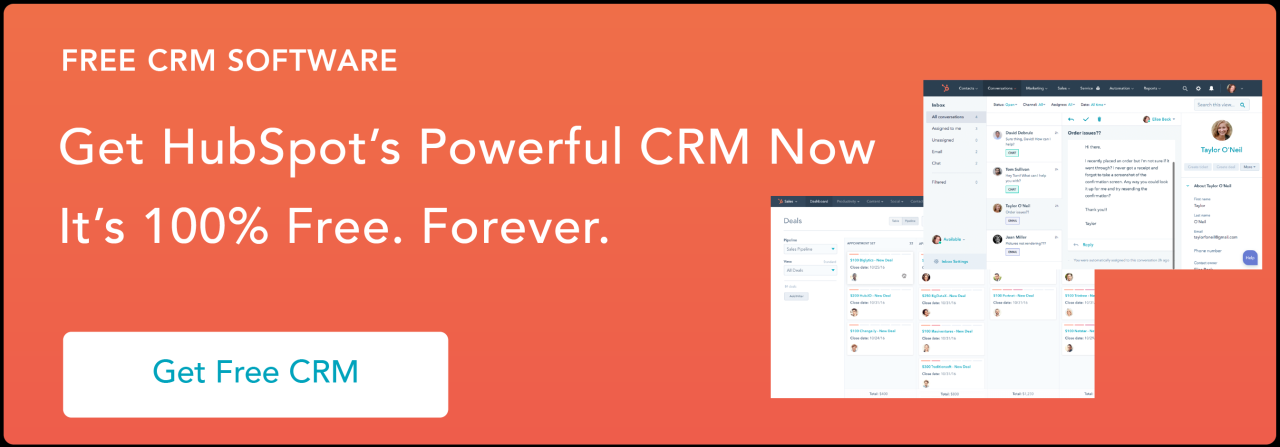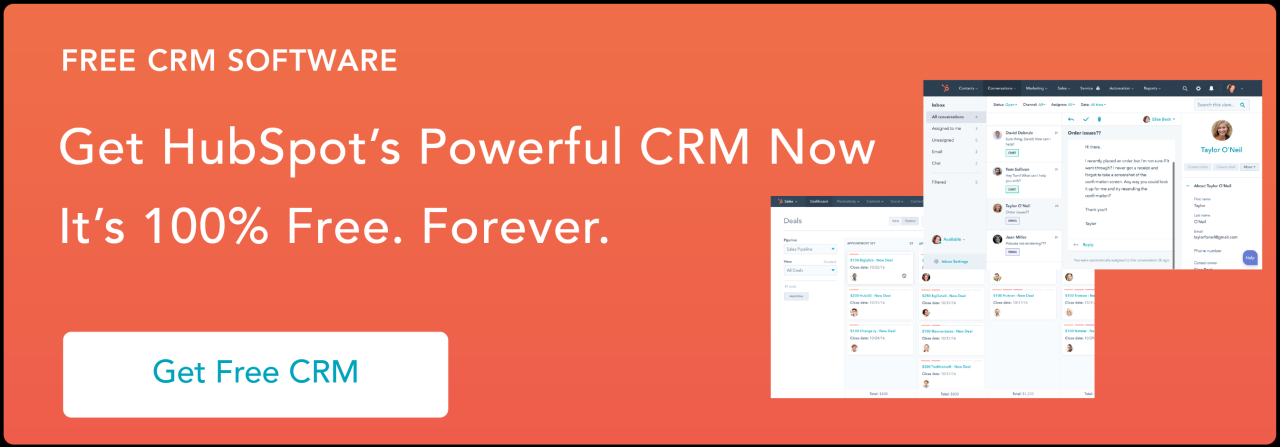Sales automation CRM systems are revolutionizing how businesses interact with customers and manage their sales processes. They offer a powerful toolkit for optimizing sales efforts, enhancing customer relationships, and driving revenue growth. From lead generation to closing deals, these systems integrate seamlessly with various business functions to streamline operations and boost efficiency.
This guide delves into the core functionalities, benefits, and implementation strategies of sales automation CRM solutions. We’ll explore key features like contact management, lead nurturing, and sales forecasting, while also examining the return on investment (ROI) and the impact on customer experience. Ultimately, we’ll equip you with the knowledge to navigate the world of sales automation CRMs and make informed decisions for your business.
Defining Sales Automation CRM

Sales automation CRM software streamlines and automates various sales processes, improving efficiency and effectiveness. It’s a centralized platform that manages interactions with potential and existing customers, enabling sales teams to focus on building relationships and closing deals. This crucial tool is vital for businesses of all sizes, enabling better tracking and management of sales opportunities.A sales automation CRM system acts as a central hub for all sales-related data.
It provides tools to track leads, manage contacts, schedule appointments, and automate follow-up tasks. Crucially, it facilitates the entire sales cycle, from initial contact to closing deals. These systems help sales teams work smarter, not harder.
Core Functionalities of a Sales Automation CRM System
Sales automation CRMs provide comprehensive functionalities to manage the entire sales pipeline. These functionalities include lead management, contact management, opportunity tracking, sales forecasting, and reporting. Each function is designed to optimize specific stages of the sales process, creating a unified system for tracking progress.
Key Benefits of Implementing a Sales Automation CRM Solution
Implementing a sales automation CRM offers several significant advantages. Increased efficiency and productivity are often seen, alongside improved sales forecasting and reporting. Better customer relationship management, due to centralized data, and a more streamlined sales process are common outcomes. Improved collaboration amongst sales teams is another key benefit, fostering a more unified approach to lead nurturing and deal closure.
Examples of Different Types of Sales Automation CRM Systems
Several sales automation CRM systems cater to diverse business needs and scales. Some focus on lead generation and nurturing, others prioritize sales forecasting and reporting, while others excel at streamlining the entire sales pipeline. Examples include Salesforce, HubSpot, Zoho CRM, and Microsoft Dynamics 365. The selection of a CRM depends on the specific requirements and budget of the business.
Comparison and Contrast of Various Sales Automation CRM Features
Different sales automation CRM systems offer varying features. Key features to compare include lead scoring, email marketing integration, social media integration, and mobile accessibility. The presence and quality of these features significantly impact the effectiveness of the CRM. Some systems might excel in lead scoring, while others might offer superior integration with existing marketing automation tools.
Types of Sales Automation CRM Tools
Different sales automation CRM tools cater to specific needs. These tools often specialize in one aspect of the sales process. Understanding these specializations can help businesses choose the right tool for their unique requirements. The following table provides a comparative overview of various tools.
| Type of Sales Automation CRM Tool | Unique Strengths |
|---|---|
| Lead Management Tools | Highly effective in capturing and qualifying leads. They can automate lead nurturing and scoring, increasing conversion rates. |
| Sales Forecasting Tools | Excellent at predicting future sales based on historical data and trends. They can provide insights into potential sales growth. |
| Customer Relationship Management (CRM) Systems | Manage the entire customer lifecycle, from initial contact to post-sale support. They offer a centralized platform for all customer interactions. |
| Sales Pipeline Management Tools | Focus on visualizing and managing the sales pipeline, helping teams track progress and identify bottlenecks. They enable better collaboration and visibility. |
Key Features of Sales Automation CRM

Sales automation CRMs are powerful tools that streamline sales processes, improving efficiency and boosting revenue. They centralize customer data, automate tasks, and provide valuable insights into sales performance. Understanding the key features is crucial for choosing the right platform for your business needs.Sales automation CRMs go beyond basic contact management, providing a holistic view of the sales pipeline.
They facilitate lead nurturing, forecasting, and ultimately, closing more deals, all while reducing manual effort and improving overall sales team performance.
Contact Management
Effective contact management is fundamental to any successful sales strategy. A robust CRM system allows for comprehensive profiles of each contact, including details such as contact information, communication history, purchase history, and any relevant notes. This detailed information empowers sales representatives to personalize interactions, tailor their approach, and ultimately, build stronger relationships. By centralizing contact data, CRMs eliminate the need for disparate spreadsheets or email chains, fostering a unified view of each customer.
Lead Nurturing
Sales automation CRMs significantly enhance lead nurturing strategies by providing automated workflows. These workflows can trigger personalized emails, targeted messages, and follow-up actions based on defined criteria. For example, a lead who downloads a specific whitepaper might automatically receive a series of emails outlining the value proposition of the product or service. This automated approach ensures leads are consistently engaged and move through the sales funnel efficiently.
Furthermore, CRMs allow for tracking the progress of each lead, providing valuable data on which nurturing strategies are most effective.
Sales Forecasting
Sales automation CRMs provide sophisticated tools for sales forecasting, offering insights into future sales performance. By tracking historical sales data, current sales trends, and sales pipeline activity, these systems can project future revenue with a high degree of accuracy. This proactive approach allows businesses to plan budgets, anticipate potential challenges, and make data-driven decisions. For instance, if a CRM system identifies a significant dip in lead conversion rates, sales teams can promptly address the issue and adjust their strategies accordingly.
Examples of this are predictive modeling features and insights from historical sales patterns.
Typical Features of Sales Automation CRM Software
| Feature | Functionality |
|---|---|
| Contact Management | Storing and managing contact details, communication history, and notes. |
| Lead Management | Capturing, qualifying, and nurturing leads throughout the sales funnel. |
| Sales Pipeline Management | Visualizing and tracking sales opportunities through various stages. |
| Task and Calendar Management | Scheduling appointments, assigning tasks, and tracking deadlines. |
| Email Marketing Integration | Automating email campaigns and tracking email open and click-through rates. |
| Reporting and Analytics | Generating reports on sales performance, identifying trends, and measuring ROI. |
| Sales Forecasting | Predicting future sales based on historical data and current trends. |
CRM Features for Different Business Sizes
| Business Size | Essential CRM Features | Advanced CRM Features |
|---|---|---|
| Small Businesses | Basic contact management, lead tracking, task management, and email integration. | Sales forecasting, basic reporting, and automated workflows. |
| Medium Businesses | Comprehensive contact management, sales pipeline management, advanced reporting, and automated workflows. | Predictive analytics, custom dashboards, and integration with other business tools. |
| Large Enterprises | Highly scalable contact management, robust sales forecasting, real-time reporting, and extensive customization options. | AI-powered lead scoring, predictive modeling, and complex integration with enterprise systems. |
Implementing a Sales Automation CRM
Implementing a sales automation CRM is a crucial step in enhancing sales processes and boosting overall efficiency. A well-implemented system can streamline workflows, improve communication, and provide valuable insights into sales performance. However, successful implementation requires careful planning, meticulous execution, and ongoing support.Selecting the right CRM, integrating it seamlessly with existing systems, and ensuring employee training are critical factors in achieving a positive return on investment.
A well-defined implementation strategy ensures a smooth transition and maximizes the CRM’s potential benefits.
Selecting a Suitable Sales Automation CRM
Choosing the right CRM is paramount to a successful implementation. Thorough research and careful consideration are key. This involves evaluating the CRM’s features, functionalities, and pricing structure, ensuring they align with the specific needs and goals of the organization. A clear understanding of the company’s unique sales processes and challenges is essential in the selection process. Consider factors like scalability, ease of use, integration capabilities, and customer support.
Pilot testing with a small team can provide valuable insights into the system’s usability and efficiency.
Integrating the Sales Automation CRM
Integrating a sales automation CRM with existing business systems is crucial for smooth data flow and efficient workflows. This integration process requires careful planning and coordination. Mapping out the data flow between the CRM and other systems is essential. This includes identifying the data points that need to be transferred, establishing the appropriate data formats, and designing the integration process to ensure data accuracy and consistency.
Thorough testing and validation of the integration process are critical to prevent errors and ensure a seamless transition.
Training Employees on the New Sales Automation CRM
Effective employee training is vital for successful CRM adoption. Training should focus on the CRM’s features, functionalities, and how they can be used to improve sales performance. A comprehensive training program should include hands-on exercises, real-world scenarios, and opportunities for questions and feedback. This ensures that employees feel confident and comfortable using the new system. Regular follow-up sessions and ongoing support can reinforce learning and address any challenges that arise.
Step-by-Step Guide for Implementing a Sales Automation CRM
- Assessment and Planning: Define specific needs and goals for the CRM. Evaluate existing processes and identify areas for improvement. Develop a detailed implementation plan that Artikels timelines, resources, and responsibilities.
- CRM Selection: Research and evaluate various CRM options. Consider factors like features, pricing, integration capabilities, and customer support. Pilot test the selected CRM with a small team.
- Data Migration Planning: Assess the data to be migrated and plan the migration process. Establish clear data mapping procedures and validation processes to ensure data accuracy.
- Integration: Integrate the CRM with existing business systems. Thoroughly test the integration to ensure data consistency and accuracy. Develop detailed user guides and training materials.
- Training and Adoption: Conduct comprehensive training sessions for employees. Provide ongoing support and resources to facilitate adoption.
- Monitoring and Evaluation: Track key metrics related to sales performance and CRM usage. Analyze data to identify areas for improvement and adjust processes accordingly.
Typical Implementation Timelines for Sales Automation CRM
| Implementation Phase | Estimated Timeframe (Months) |
|---|---|
| Assessment and Planning | 1-2 |
| CRM Selection and Setup | 2-3 |
| Data Migration | 1-2 |
| Integration | 1-2 |
| Training and Adoption | 1-2 |
| Monitoring and Evaluation | Ongoing |
Note: Timeframes can vary based on the complexity of the CRM, the size of the organization, and the scope of integration. A thorough assessment of these factors is essential for realistic time estimations. Examples from successful implementations in similar industries can provide valuable benchmarks.
Data Migration When Switching to a New Sales Automation CRM
Migrating data from an existing system to a new CRM is a critical step. Proper data migration ensures a smooth transition and avoids disruptions in sales operations. Carefully planning the migration process, mapping data fields, and testing the data accuracy are crucial. Data cleansing and validation procedures help ensure data integrity and reduce errors. This process is vital for maintaining a complete and accurate record of sales activities, customer information, and other relevant data.
Benefits and ROI of Sales Automation CRM
A robust sales automation CRM system offers significant advantages, streamlining processes and boosting overall performance. By automating tasks and providing comprehensive insights, these systems can substantially improve sales efficiency, customer relationships, and ultimately, profitability. This section will delve into the measurable benefits and return on investment (ROI) associated with implementing a sales automation CRM.
Return on Investment (ROI)
Sales automation CRMs offer a substantial return on investment by optimizing sales processes and improving resource allocation. Quantifiable ROI often includes reduced operational costs, increased sales revenue, and improved customer satisfaction, leading to higher customer lifetime value. A well-implemented system can yield a positive ROI within a relatively short timeframe, making it a worthwhile investment for businesses seeking to enhance their sales performance.
Increased Sales Efficiency
Implementing a sales automation CRM can significantly improve sales efficiency. Automating tasks such as lead qualification, follow-up scheduling, and report generation frees up sales representatives to focus on higher-value activities like building relationships and closing deals. This leads to increased productivity and, consequently, a higher volume of completed sales transactions. For example, a company that automates lead nurturing and follow-up emails might see a 20-30% increase in qualified leads, leading to a direct impact on sales conversion rates.
Impact on Customer Relationship Management
Sales automation CRMs significantly enhance customer relationship management (CRM). By centralizing customer data, automating communication, and providing comprehensive insights, these systems allow businesses to develop a more profound understanding of their customers. This deeper understanding enables personalized interactions, leading to increased customer satisfaction and loyalty. Improved communication through automated follow-ups and personalized messages fosters stronger relationships, boosting customer retention rates.
Improved Customer Satisfaction
A sales automation CRM improves customer satisfaction by enabling more efficient and personalized communication. Automating responses to customer inquiries, tracking customer interactions, and providing personalized product recommendations fosters a more positive customer experience. This results in increased customer loyalty and reduced customer churn. For instance, a company using a CRM to schedule follow-up calls with customers after a purchase can enhance the customer journey and improve overall satisfaction scores.
Reduced Operational Costs
Implementing a sales automation CRM can lead to significant reductions in operational costs. Automation of repetitive tasks reduces the need for manual intervention, thereby minimizing labor costs. Accurate forecasting and sales pipeline management also improve resource allocation, preventing unnecessary spending and maximizing efficiency. For example, by automating invoice processing and order fulfillment, a company can decrease administrative costs and improve cash flow.
Measurable Benefits
| Benefit | Increased Sales | Reduced Costs |
|---|---|---|
| Increased Sales Conversions | +20-30% | -10-15% (Administrative Costs) |
| Improved Lead Qualification | +15-25% | -5-10% (Sales Training Costs) |
| Reduced Sales Cycle Time | +10-20% | -8-12% (Sales Support Costs) |
| Enhanced Customer Retention | +5-10% | -3-5% (Customer Acquisition Costs) |
These figures represent potential gains and are not universal. Actual results will vary based on the specific implementation and the company’s current operational structure.
Sales Automation CRM and Customer Experience
A robust sales automation CRM system can significantly enhance the customer experience, moving beyond transactional interactions to foster lasting relationships. By streamlining processes and providing personalized interactions, CRMs empower businesses to deliver exceptional customer service and build brand loyalty. This ultimately translates to increased customer lifetime value and a competitive advantage in the market.
Enhanced Customer Experience through Sales Automation
Sales automation CRMs provide a comprehensive view of customer interactions, enabling businesses to tailor their approach and create a more personalized experience. This holistic view of the customer allows for proactive engagement, anticipating needs and proactively addressing potential issues. Ultimately, this proactive approach leads to a more satisfying and streamlined customer journey.
Personalized Customer Interactions Supported by Sales Automation CRM
Sales automation CRMs enable businesses to segment their customer base and tailor interactions accordingly. This segmentation allows for personalized communication and targeted marketing campaigns, fostering stronger relationships with customers. For instance, a CRM can identify customers who have shown interest in a specific product and send them tailored recommendations or promotions.
Facilitating Seamless Communication with Customers
CRMs facilitate seamless communication by centralizing customer data and enabling automated responses to inquiries. This streamlined communication ensures that customers receive timely and accurate information, improving their overall satisfaction. For example, automated email responses can acknowledge customer inquiries immediately, reducing response times and improving the customer experience.
Sales Automation CRM and Improved Customer Service
A sales automation CRM system provides tools for tracking customer issues, assigning cases to the appropriate representatives, and monitoring resolution times. This structured approach to customer service ensures issues are resolved efficiently and effectively, improving overall customer satisfaction. By having a centralized repository for customer information and service interactions, the CRM facilitates efficient issue resolution.
Examples of CRM-Driven Customer Service Improvements
Consider a company using a CRM to track customer support tickets. The system automatically assigns tickets to the appropriate support agent based on their expertise, ensuring that customers receive timely and effective assistance. Another example is a CRM used to track customer preferences and purchase history. This information can be used to personalize product recommendations, leading to higher customer satisfaction and increased sales.
Best Practices for Positive Customer Experience with CRM
Implementing a CRM for a positive customer experience requires a commitment to data accuracy, consistent communication, and proactive engagement. Furthermore, continuous monitoring and feedback collection are essential to identify areas for improvement and adapt strategies to customer needs.
Impact of CRM Features on Customer Experience
| CRM Feature | Impact on Customer Experience |
|---|---|
| Customer Relationship Management (CRM) System | Provides a centralized view of customer interactions, enabling businesses to understand customer needs and preferences better, resulting in a more personalized and proactive approach. |
| Automated Email Marketing | Allows for targeted communications and personalized recommendations, leading to a more relevant and engaging customer experience. |
| Lead Management | Enables efficient handling of leads, leading to faster response times and a more responsive customer experience. |
| Sales Force Automation | Improves sales efficiency, resulting in faster response times to customer inquiries and a more streamlined purchasing experience. |
| Customer Support Ticketing | Enables efficient tracking and resolution of customer issues, improving response times and overall customer satisfaction. |
Trends and Future of Sales Automation CRM
Sales automation CRMs are constantly evolving, adapting to the dynamic needs of modern businesses. This evolution is driven by technological advancements, changing customer expectations, and the increasing importance of data-driven decision-making. Understanding these trends is crucial for businesses looking to leverage the full potential of their sales automation tools.The future of sales automation CRMs is bright, characterized by increased integration with other business systems, greater emphasis on personalized customer experiences, and more sophisticated AI-driven insights.
Businesses that embrace these trends will gain a competitive advantage by streamlining their sales processes, improving customer engagement, and ultimately, boosting revenue.
Current Trends in Sales Automation CRM Technology
Sales automation CRMs are moving beyond basic task management and contact tracking. Current trends emphasize intelligent automation, integrating with other business systems, and providing robust analytics. A key trend is the use of AI and machine learning to automate tasks, analyze data, and predict customer behavior. These advancements allow for more proactive sales strategies, targeted campaigns, and improved customer satisfaction.
Emerging Technologies Shaping the Future of Sales Automation CRM
Several emerging technologies are poised to significantly impact the future of sales automation CRMs. These include the Internet of Things (IoT), blockchain technology, and augmented reality (AR). IoT data can enrich customer profiles, providing insights into their behaviors and preferences. Blockchain technology can enhance data security and transparency in sales transactions. AR can create immersive sales experiences, enabling virtual product demonstrations and interactive training.
AI and Machine Learning’s Influence on Sales Automation CRM
AI and machine learning are revolutionizing sales automation CRMs. AI-powered chatbots can handle routine customer inquiries, freeing up sales representatives to focus on complex interactions. Machine learning algorithms can predict sales opportunities, identify potential churn risks, and personalize customer interactions. This leads to more efficient sales processes, increased conversion rates, and improved customer relationships.
Adapting to Mobile-First Environments
Modern sales representatives are increasingly mobile. Sales automation CRMs are adapting by offering mobile-friendly interfaces, enabling sales teams to access critical information and perform tasks on the go. This includes real-time updates on deals, access to customer data, and mobile-optimized dashboards. Companies are recognizing the importance of responsiveness and offering seamless experiences across various devices.
Future Developments in the Sales Automation CRM Landscape
The future of sales automation CRMs will likely see a greater focus on predictive analytics, integrating with other business applications, and offering more sophisticated customer relationship management features. Businesses can expect more personalized customer experiences, enhanced security measures, and improved integration with marketing automation tools.
Table: Transforming Sales Automation CRM Systems
| Technology | Transformation | Example |
|---|---|---|
| AI/Machine Learning | Automating tasks, predicting outcomes, personalizing interactions | AI-powered lead scoring, automated email campaigns based on customer behavior |
| Cloud Computing | Increased accessibility, scalability, and cost-effectiveness | CRM access from anywhere, real-time data sharing across teams |
| IoT | Enhancing customer profiles with real-time data | Collecting data on customer device usage to tailor product recommendations |
| Blockchain | Improving data security and transparency | Securely storing and tracking sales transactions, eliminating fraud |
| AR/VR | Creating immersive customer experiences | Virtual product demonstrations, interactive training modules |
Summary

In conclusion, implementing a sales automation CRM is a strategic investment that can significantly impact your sales performance and customer relationships. By understanding the key features, implementation steps, and ROI potential, businesses can leverage these powerful tools to optimize their sales processes, foster stronger customer connections, and drive sustainable growth. This comprehensive guide provides a roadmap for success in the dynamic world of sales automation.
Answers to Common Questions
What are some common CRM integration challenges?
Integrating a CRM with existing systems can present challenges related to data compatibility, technical expertise, and time constraints. Careful planning, choosing the right CRM, and addressing potential compatibility issues are crucial to a successful integration.
How does a CRM impact customer satisfaction?
By centralizing customer data and facilitating personalized interactions, CRMs can improve communication and responsiveness. This, in turn, leads to a better customer experience and increased customer satisfaction.
What are the typical costs associated with implementing a CRM?
Implementation costs vary depending on factors such as the chosen CRM, size of the business, customization needs, and integration complexity. Software licensing, training, and potential third-party integration fees should be considered.
How can I choose the right CRM for my business?
Carefully assess your business needs and the specific features required. Consider factors like scalability, the size of your team, the industry you’re in, and your budget. Don’t hesitate to gather input from key stakeholders and thoroughly evaluate different CRM options.
What are the long-term benefits of a sales automation CRM?
Beyond immediate gains, a CRM fosters a culture of data-driven decision-making. This translates to improved sales forecasting, optimized resource allocation, and increased profitability over time.






